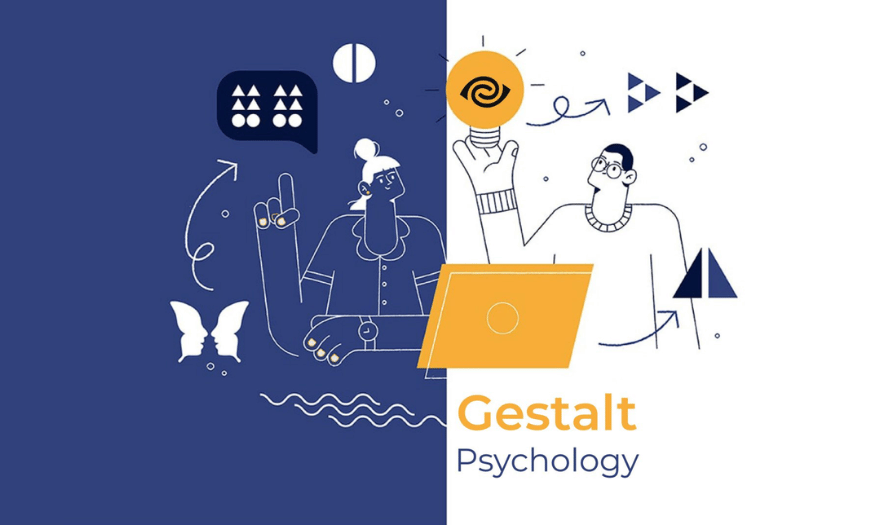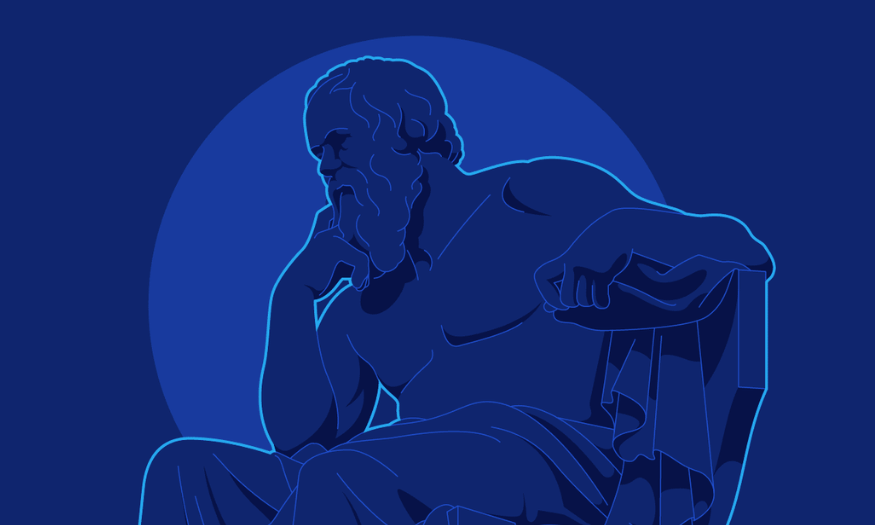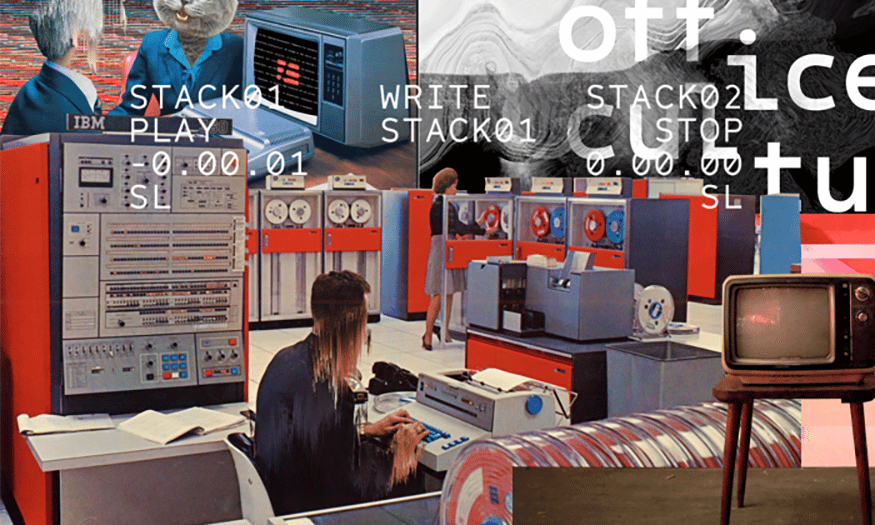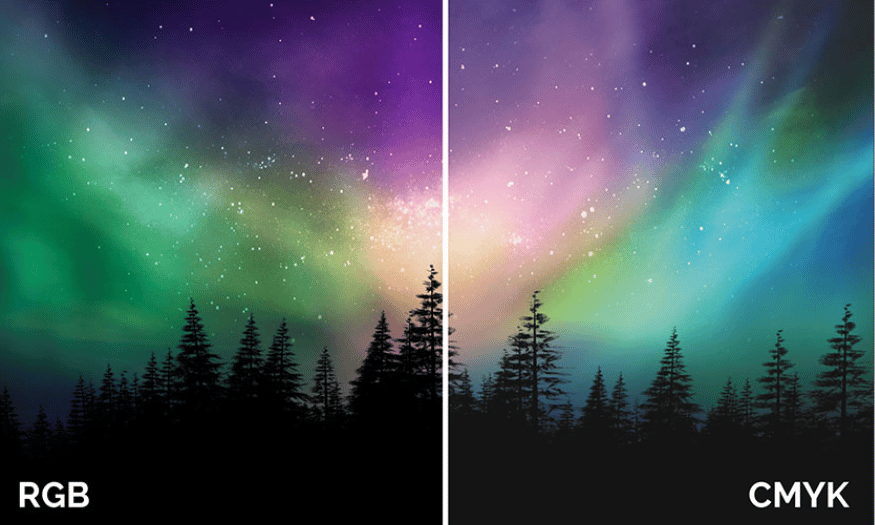Best Selling Products
Using Hot Colors: Why Do Many Big Brands Use Red - Orange - Yellow?
Nội dung
- 1. Understand correctly about warm colors in graphic design
- 2. Why do big brands prefer red - orange - yellow?
- 2.1 Red: Power and urgency
- 2.2 Orange: Friendly and creative
- 2.3 Yellow: Cheerful and optimistic
- 3. Popular applications of warm colors in brand design
- 3.1 Logo Design
- 3.2 Website and App
- 3.3 Advertisements and Posters
- 4. 4 in-depth principles for effective application of warm colors
- 4.1 Put user emotions first
- 4.2 Do not abuse
- 4.3 Combine with neutral colors for balance
- 4.4 Always put in the context of overall brand identity
- 5. Design support tool: Canva
- 6. Conclusion
In the modern marketing world, color plays an extremely important role in building brands and attracting customers. Big brands such as Coca-Cola, McDonald's and Ferrari have cleverly used warm colors such as red, orange and yellow to create strong and memorable impressions. Color is not only an aesthetic factor, but also has profound meanings in the psychology, emotions and behavior of consumers. So, why do many big brands choose warm colors to convey their messages and values? Let's explore with Sadesign the profound and effective reasons for utilizing color in branding strategy.
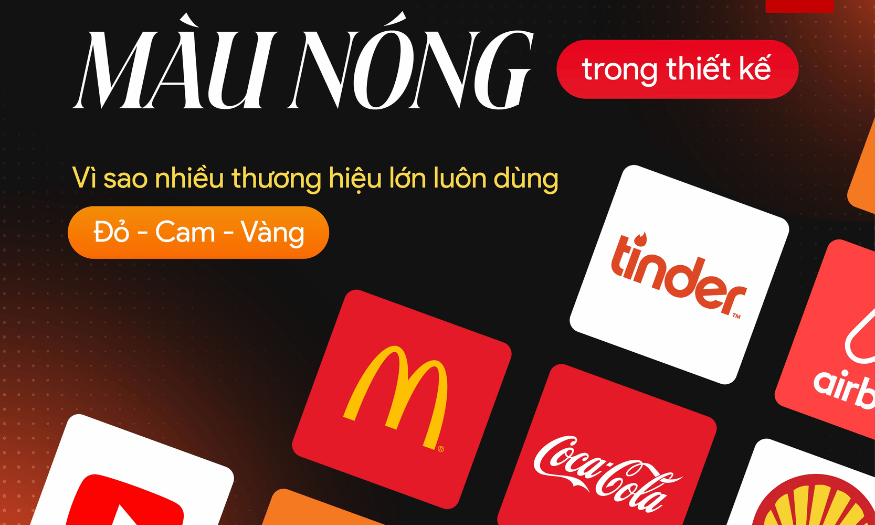
In the modern marketing world, color plays an extremely important role in building brands and attracting customers. Big brands such as Coca-Cola, McDonald's and Ferrari have cleverly used warm colors such as red, orange and yellow to create strong and memorable impressions. Color is not only an aesthetic factor, but also has profound meanings in the psychology, emotions and behavior of consumers. So, why do many big brands choose warm colors to convey their messages and values? Let's explore with Sadesign the profound and effective reasons for utilizing color in branding strategy.
1. Understand correctly about warm colors in graphic design
Warm colors are a group of colors such as red, orange, yellow and their variations (like red-orange, yellow-brown…). These colors evoke warmth, excitement, energy, action and sometimes a sense of urgency. In graphic design, the use of warm colors not only creates eye-catching products but also deeply affects the emotions and behavior of viewers.
In color psychology, warm colors are often processed faster by the brain, attract more attention, and make a stronger first impression than cool colors. This means that when consumers see these colors, they immediately feel the attraction and energy. The warmth and vibrancy of warm colors can make designs more vivid, attractive, and memorable.
Warm colors are more than just bright hues; they also carry different meanings and emotions. For example, red can evoke passion and power, while yellow can evoke feelings of joy and optimism. When combined properly, designers can create works that are not only beautiful but also convey a powerful message.
Additionally, warm colors are often used to designate important elements in a design, such as call-to-action (CTA) buttons or urgent messages. This makes it easier for viewers to recognize and interact with key elements in the design.
2. Why do big brands prefer red - orange - yellow?
2.1 Red: Power and urgency
Red is considered an emotional color, suggesting love, determination, and passion. It is also often associated with a sense of urgency, such as a warning light or stop sign. In marketing, red is often used to stimulate action, such as "Buy Now," "Special Discount," or "Flash Sale" buttons.
Big brands like Coca-Cola, Netflix, and YouTube have chosen red as their primary color because it has the ability to awaken the senses, create curiosity, and stimulate consumers to make quick purchases. Red not only attracts attention but also encourages action, making it a powerful tool in marketing strategies.
Furthermore, red can be easily combined with other colors to create impressive designs. The contrast between red and colors like white or black can highlight the message and help the brand easily stick in the minds of customers.
2.2 Orange: Friendly and creative
If red is too strong, orange is the perfect blend of energy and comfort. Orange evokes a youthful, fun and friendly feeling, so it is often used by brands targeting young audiences such as Fanta, SoundCloud or Shopee. Orange not only represents the spirit of innovation but also creates a creative atmosphere.
In design, orange is often used to highlight call-to-action (CTA) buttons, conveying friendliness and encouraging users to engage. This helps create a positive experience for viewers, making them feel comfortable and ready to interact.
Orange is also a great fit for products that are entertainment, new technology, education or street fashion. The combination of energy and friendliness of orange helps the brand create a youthful and dynamic image, attracting the attention of young customers.
(1).png)
2.3 Yellow: Cheerful and optimistic
Yellow, with its bright glow, evokes feelings of joy, optimism and hope. When used in design, yellow often creates a positive atmosphere, encouraging viewers to feel happy and comfortable. This is why many big brands choose yellow to convey a message of trust and positive energy.
Yellow is often paired with blue to create a strong contrast that makes both colors stand out. This combination not only attracts the eye but also creates a sense of harmony and balance in the design. Brands like McDonald's and IKEA have used yellow to create a sense of friendliness and familiarity, making them easily recognizable to consumers.
Yellow can also be used to indicate special messages, such as promotions or special events. Because of its attention-grabbing properties, yellow helps brands stand out in a sea of information and choice.
3. Popular applications of warm colors in brand design
Warm colors, including shades of red, orange, and yellow, are not just bold colors, but also carry strong meanings and emotions. In branding, warm colors are often used to create a first impression, attract attention, and express the brand's personality. Below are common applications of warm colors in branding design.
3.1 Logo Design
Warm colors make logos recognizable in both physical and digital spaces. A logo designed with warm colors not only attracts attention but also conveys a strong message of energy and determination. Brands that are fast-acting, dynamic, or target a younger audience will find warm colors to be a great choice.
Big brands like Coca-Cola, YouTube, and Target have used red to create memorable and recognizable logos. Red is not only powerful, but also evokes emotions, making it easy for consumers to associate with the brand. Similarly, orange is also chosen by many brands like Fanta and SoundCloud to represent fun and creativity. Logos are not only a symbol of recognition but also a way to express the brand’s identity and personality, and warm colors play an important role in this.
When designing a logo, combining warm colors with geometric elements or unique shapes will create deep impressions. The logo image can be a combination of colors and shapes, creating movement and dynamism, thereby helping the brand affirm its position in the minds of customers.
.png)
3.2 Website and App
In website or mobile app interfaces, warm colors are often used for action buttons such as “Sign up now”, “Add to cart”, or “See more”. Many studies have shown that CTA (Call-to-Action) buttons using warm colors can increase conversion rates by up to 30% if placed in the right position and size. This shows the power of color in guiding users’ actions.
Red, with its prominent nature, is often used to attract immediate attention, making it impossible for users to ignore. In addition, orange also brings a sense of friendliness and closeness, encouraging users to interact more. From there, designers can create positive user experiences, helping to increase the effectiveness of websites or applications.
Additionally, warm colors can be used to divide content sections within an interface, creating a clear contrast between elements. This not only makes it easier for users to find information, but also creates an interesting visual experience, making them want to come back and use the service again and again.
3.3 Advertisements and Posters
In outdoor or social media advertising campaigns, warm colors help increase the ability to be noticed in the "forest of information". A poster with a dominant red color scheme is often more likely to stop the viewer than a monochrome or dull design. Warm colors not only create prominence but also express the brand message strongly and clearly.
The combination of warm colors and eye-catching images will create attractive advertisements that are easy for viewers to remember and easily recognize the brand. Brands such as McDonald's and KFC often use red and yellow in their advertisements, not only to attract attention but also to show friendliness and closeness.
In advertising design, the use of warm colors can also create a sense of urgency, urging consumers to take immediate action. For example, promotional or discount messages are often displayed prominently in red or orange, encouraging customers not to miss the opportunity. This not only increases the effectiveness of the advertising campaign but also significantly increases sales.
.png)
4. 4 in-depth principles for effective application of warm colors
Warm colors, with their powerful emotional power, have become an indispensable part of branding. However, to use warm colors effectively, designers need to follow certain principles. Here are four in-depth principles to help you apply warm colors effectively in your design projects.
4.1 Put user emotions first
The first and most important rule is to determine the emotion you want your users to feel. The emotion can be excitement, urgency, or excitement, and from there, you will choose the corresponding warm color tone. For example, bright red is often associated with action and urgency, while peach can convey a sense of creativity and friendliness. Pale yellow evokes warmth and comfort.
To ensure that the warm colors you choose align with your brand’s core spirit, create a brand moodboard. This will help you visualize the emotional elements that colors bring, thereby serving as a basis for choosing colors in design. This will not only help create harmonious designs but also help brands connect deeply with consumers through the emotions that colors evoke.
4.2 Do not abuse
Although warm colors are powerful, if overused, they can cause visual “burn”, making viewers feel tired and uncomfortable. Therefore, warm colors should be used as an accent, not as the main background for the entire design. A few well-timed warm color accents are often much more effective than using a bright color block.
A popular rule of thumb in color design is the “60-30-10 rule.” This means that 60% of the background color should be neutral or easy-to-read colors, 30% should be a complementary color, usually a cool color or a bold neutral, and the remaining 10% should be an accent color, which is where warm colors come in. Applying this rule not only helps you create balance in your design, but also highlights important points that you want viewers to pay attention to, such as buy buttons or headlines.
.png)
4.3 Combine with neutral colors for balance
Combining warm colors with neutrals like white, black, gray, or navy is one of the most effective ways to create balance in a design. These neutrals allow warm colors to "shine" without being overpowering. This is a "visual makeup" principle that is very popular with professional designers.
For example, when red is placed next to navy blue, it not only creates a sense of prestige and power, but is also very suitable for industries such as finance, education or technology. Similarly, orange on a white or beige background is youthful, easy to read, and reminiscent of sunshine, which is great for food or travel brands. Combining colors cleverly will create designs that are more attractive and memorable.
4.4 Always put in the context of overall brand identity
Finally, when using warm colors in your designs, you need to make sure that the colors you choose fit within your overall brand color scheme. Color choices should not be based solely on inspiration, but should be considered in the context of your overall brand identity. Consistency in color will help consumers connect your brand to the color in a natural and lasting way.
Many designers make the mistake of equating the warm colors of temporary promotional campaigns with the primary colors of their brand identity. The key difference is that brand colors need to be permanent, while campaign colors can be more flexible and creative. For example, GrabFood uses green as its primary brand color, but for their “fast-close” promotions, they often use red to stimulate immediate action. Similarly, Shopee has an orange base, but when running a “Super Sale” program, they will intensify red to create a sense of urgency.
.png)
5. Design support tool: Canva
Canva is a powerful, easy-to-use online design tool that allows users to create beautiful graphics without any professional design skills. With a friendly and intuitive interface, Canva offers millions of diverse design templates for needs such as social media posts, flyers, invitations, and more.
Upgrade now
Canva's strengths include a rich library of images, icons, and fonts, making it easy for users to personalize their products. In addition, Canva also supports drag and drop, allowing users to quickly change layouts and add content as desired.
.png)
6. Conclusion
Using warm colors like red, orange, and yellow not only helps big brands stand out from the crowd, but also creates a strong connection with customers. These colors evoke positive emotions, arouse excitement, and motivate action. Through this article, we have seen that color choice in marketing is not only based on personal preferences, but also a sophisticated, well-researched strategy to optimize the consumer experience. Therefore, understanding and properly applying these colors will help brands not only attract but also retain customers more effectively in today's fiercely competitive market.









































